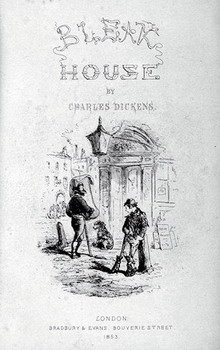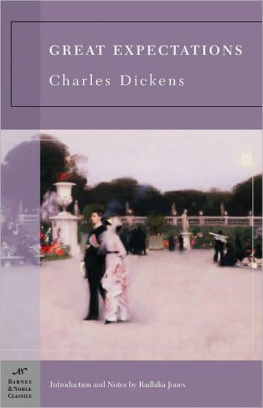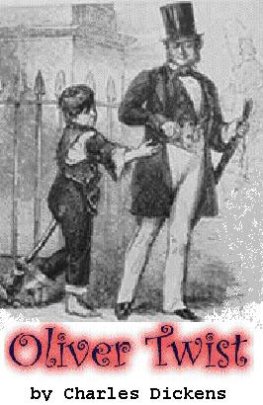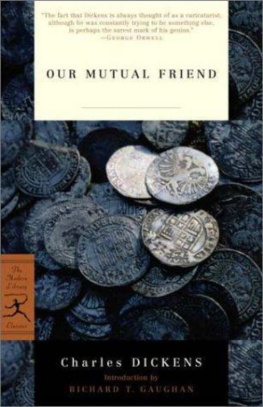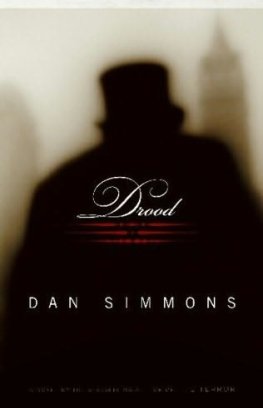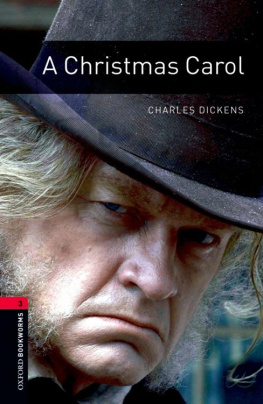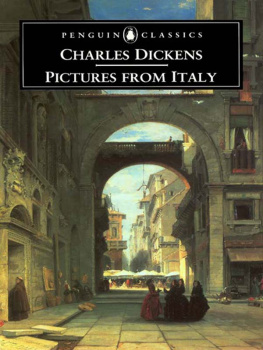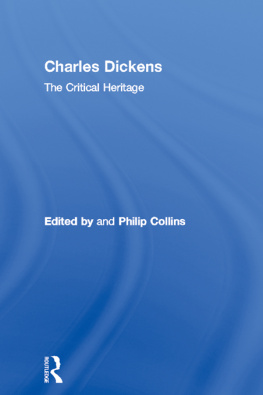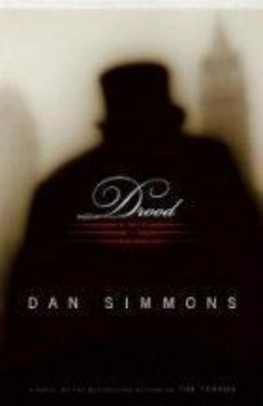Charles Dickens - The Mystery of Edwin Drood (Modern Library)
Here you can read online Charles Dickens - The Mystery of Edwin Drood (Modern Library) full text of the book (entire story) in english for free. Download pdf and epub, get meaning, cover and reviews about this ebook. year: 2009, publisher: Modern Library, genre: Detective and thriller. Description of the work, (preface) as well as reviews are available. Best literature library LitArk.com created for fans of good reading and offers a wide selection of genres:
Romance novel
Science fiction
Adventure
Detective
Science
History
Home and family
Prose
Art
Politics
Computer
Non-fiction
Religion
Business
Children
Humor
Choose a favorite category and find really read worthwhile books. Enjoy immersion in the world of imagination, feel the emotions of the characters or learn something new for yourself, make an fascinating discovery.

- Book:The Mystery of Edwin Drood (Modern Library)
- Author:
- Publisher:Modern Library
- Genre:
- Year:2009
- Rating:3 / 5
- Favourites:Add to favourites
- Your mark:
- 60
- 1
- 2
- 3
- 4
- 5
The Mystery of Edwin Drood (Modern Library): summary, description and annotation
We offer to read an annotation, description, summary or preface (depends on what the author of the book "The Mystery of Edwin Drood (Modern Library)" wrote himself). If you haven't found the necessary information about the book — write in the comments, we will try to find it.
The Mystery of Edwin Drood (Modern Library) — read online for free the complete book (whole text) full work
Below is the text of the book, divided by pages. System saving the place of the last page read, allows you to conveniently read the book "The Mystery of Edwin Drood (Modern Library)" online for free, without having to search again every time where you left off. Put a bookmark, and you can go to the page where you finished reading at any time.
Font size:
Interval:
Bookmark:

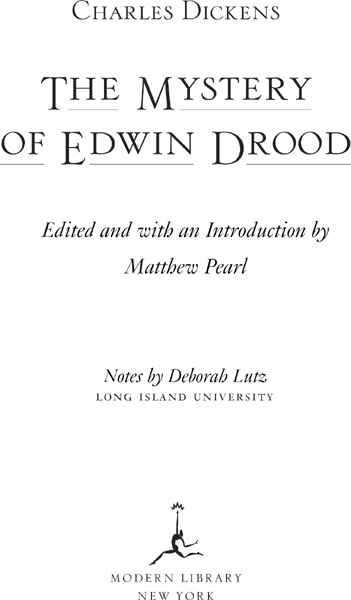
Charles Dickens was born on February 7, 1812, in Portsmouth, England, where his father was a naval pay clerk. When he was five the family moved to Chatham, near Rochester, another port town. He received some education at a small private school, but this was curtailed when his fathers fortunes declined. More significant was his childhood reading, which he evoked in a memory of his fathers library: From that blessed little room, Roderick Random, Peregrine Pickle, Humphry Clinker, Tom Jones, The Vicar of Wakefield, Don Quixote, Gil Blas and Robinson Crusoe came out, a glorious host, to keep me company. They kept alive my fancy, and my hope of something beyond that place and time.
When Dickens was ten the family moved to Camden Town, and this proved the beginning of a long, difficult period. (He wrote later of his coach journey, alone, to join his family at the new lodgings: I consumed my sandwiches in solitude and dreariness, and it rained hard all the way, and I thought life sloppier than I had expected to find it.) When he had just turned twelve Dickens was sent to work for a manufacturer of boot blacking, where for the better part of a year he labored for ten hours a day, an unhappy experience that instilled him with a sense of having been abandoned by his family: No advice, no counsel, no encouragement, no consolation, no support from anyone that I can call to mind, so help me God! Around the same time, Dickenss father was jailed for debt in the Marshalsea Prison, where he remained for fourteen weeks. After some additional schooling, Dickens worked as a clerk in a law office and taught himself shorthand; this qualified him to begin working in 1831 as a reporter in the House of Commons, where he was known for the speed with which he took down speeches.
By 1833 Dickens was publishing humorous sketches of London life in the Monthly Magazine, which were collected in book form as Sketches by Boz (1836). These were followed by the publication in installments of the comic adventures that became The Posthumous Papers of the Pickwick Club (1837), whose unprecedented popularity made the twenty-five-year-old author a national figure. In 1836 he married Catherine Hogarth, who would bear him ten children over a period of fifteen years. Dickenss energies enabled him to lead an active family and social life, including an indulgence in elaborate amateur theatricals, while maintaining a literary productiveness of astonishing proportions. He characteristically wrote his novels for serial publication, and was himself the editor of many of the periodicalsBentleys Miscellany, The Daily News, Household Words, All the Year Roundin which they appeared. Among his close associates were his future biographer John Forster and the younger Wilkie Collins, with whom he collaborated on fictional and dramatic works. In rapid succession he published Oliver Twist (1838), Nicholas Nickleby (1839), The Old Curiosity Shop (1841), and Barnaby Rudge (1841), sometimes working on several novels simultaneously.
Dickenss celebrity led to a tour of the United States in 1842. There he met Longfellow, Irving, Bryant, and other literary figures, and was received with an enthusiasm that was dimmed somewhat by the criticisms Dickens expressed in his American Notes (1842) and in the American chapters of Martin Chuzzlewit (1844). The appearance of A Christmas Carol in 1843 sealed his position as the most widely popular writer of his time; it became an annual tradition for him to write a story for the season, of which the most memorable were The Chimes (1844) and The Cricket on the Hearth (1845). He continued to produce novels at only a slightly diminished rate, publishing Dombey and Son in 1848 and David Copperfield in 1850; of the latter, his personal favorite among his books, he wrote to Forster: If I were to say half of what Copperfield makes me feel tonight how strangely, even to you, I should be turned inside out! I seem to be sending some part of myself into the Shadowy World.
From this point on his novels tended to be more elaborately constructed and harsher and less buoyant in tone than his earlier works. These late novels include Bleak House (1853), Hard Times (1854), Little Dorrit (1857), A Tale of Two Cities (1859), and Great Expectations (1861). In the Preface to A Tale of Two Cities, Dickens mentions that he thought of the idea for his great novel of the French Revolution when he was acting in Wilkie Collinss The Frozen Deep. He became involved with a fellow cast member, the young actress Ellen Ternan, an association that led Dickens to separate from his wife in 1858, a scandal that alienated him from many of his former associates and admirers.
Our Mutual Friend, published in 1865, was his last completed novel, and perhaps the most somber and savage of his later works. Dickens was weakened by years of overwork and by a near-fatal railroad disaster during the writing of Our Mutual Friend. Nevertheless he embarked on a series of public readings, including a return visit to America in 1867, which further eroded his health. A final work, The Mystery of Edwin Drood, a crime novel much influenced by Wilkie Collins, was left unfinished upon his death on June 9, 1870, at the age of fifty-eight.
C HAPTER I:
C HAPTER II:
C HAPTER III:
C HAPTER IV:
C HAPTER V:
C HAPTER VI:
C HAPTER VII:
C HAPTER VIII:
C HAPTER IX:
C HAPTER X:
C HAPTER XI:
C HAPTER XII:
C HAPTER XIII:
C HAPTER XIV:
C HAPTER XV:
C HAPTER XVI:
C HAPTER XVIII:
C HAPTER XIX:
C HAPTER XX:
C HAPTER XXI:
C HAPTER XXII:
Matthew Pearl
H OW WAS T HE M YSTERY OF E DWIN D ROOD TO END ? This question has been asked ever since Charles Dickens died in early summer 1870 and left only the first six of the books planned twelve installments complete. A few weeks after his death, the magazine Public Opinion promised that Dickenss private notes were forthcoming and would enable the reader to arrive at a partial solution of the mystery, while the American Literary Gazette & Publishers Circular reported even more optimistically that Dickens had in fact finished the whole book. But the publishers prefatory note in the first edition of Drood, which contained only the six installments, responded indirectly to this wishful thinking and, in the tone of an affidavit, stated categorically that there were no pages, clues, or notes left by the author about the second half of the novel:
All that was left in manuscript of EDWIN DROOD is contained in this volume The only notes in reference to the story that have since been found concern that portion of it exclusively, which is treated in the earlier part. Beyond the clews therein afforded to its conduct or catastrophe, nothing whatever remains.
This statement did little to satisfy readers. More than for any other unfinished book, we are incorrigible in our demand for an ending to The Mystery of Edwin Drood. After all, the title promises a mystery, and a mystery, traditionally, promises a solution. Buthere I tread sacrilegious groundare we certain Dickens himself knew the ending?
Font size:
Interval:
Bookmark:
Similar books «The Mystery of Edwin Drood (Modern Library)»
Look at similar books to The Mystery of Edwin Drood (Modern Library). We have selected literature similar in name and meaning in the hope of providing readers with more options to find new, interesting, not yet read works.
Discussion, reviews of the book The Mystery of Edwin Drood (Modern Library) and just readers' own opinions. Leave your comments, write what you think about the work, its meaning or the main characters. Specify what exactly you liked and what you didn't like, and why you think so.


